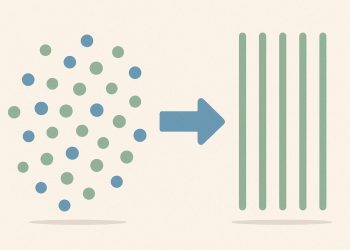Chain-of-Thought (CoT) prompting is a way for AI to show its thinking step by step, making answers easier to check and trust. This method helps businesses get more accurate and explainable results, which is important for meeting rules and regulations. Different versions of CoT, like Few-Shot and Auto-CoT, let companies use AI for things like finance, healthcare, and marketing while improving transparency. Although CoT uses more resources, it greatly cuts down on errors and saves time in the long run. As more rules about AI come out, using CoT now helps companies avoid bigger problems later.
What is Chain-of-Thought (CoT) prompting and why is it important for enterprises using AI?
Chain-of-Thought prompting is a technique where AI models show their reasoning step by step, making answers auditable and transparent. By articulating each logical step, CoT enables enterprises to extract reliable, explainable results from AI, improving accuracy and meeting regulatory requirements.
Inside Chain-of-Thought Prompting: How Step-by-Step Thinking Turns LLMs into Reasoning Engines
Every time you ask a large language model to solve a tricky math problem or draft a legal brief, you are implicitly asking it to think. Chain-of-Thought (CoT) prompting makes that thinking visible. First outlined by Google Research in 2022, the technique has quietly become the default way enterprises extract reliable, auditable answers from generative AI. In 2025, more than 60 % of Fortune 500 AI workflows that involve multi-step reasoning now embed some flavor of CoT, according to a recent IBM survey cited in industry briefings.
What CoT Prompting Actually Does
Traditional prompting asks the model for a final answer in one shot. CoT prompting adds an intermediate request: “Show your reasoning step by step.” The result is a miniature proof, a sequence of short sentences that mimic the way a human would scribble on scratch paper.
- Example – Zero-Shot CoT (single line):*
Prompt: “Q: Roger has 5 tennis balls. He buys 2 more cans of tennis balls. Each can has 3 tennis balls. How many tennis balls does he have now? Let’s think step by step.”
Model Output:
1. Roger starts with 5 tennis balls.
2. He buys 2 cans × 3 balls = 6 additional balls.
3. Total = 5 + 6 = 11 tennis balls.
Because the model articulates each link, downstream systems can audit* * or reroute* * if any step looks odd.
Variants You Will Meet in 2025
| Variant | Core Idea | Typical Use Case |
|---|---|---|
| Few-Shot CoT | Supply 2-3 solved examples before the target question | Regulatory compliance checks |
| *Auto-CoT * | Cluster similar problems and auto-generate reasoning chains | Dynamic customer-support bots |
| Tree of Thoughts (ToT) | Explore multiple branches, backtrack if a branch stalls | Financial scenario modeling |
| Graph of Thoughts (GoT) | Allow merges and jumps between reasoning nodes | Multi-source data synthesis for market research |
Each variant trades additional compute for higher accuracy and transparency. Auto-CoT, for instance, reduces manual prompt engineering by roughly 40 %, according to benchmarks published in the PromptHub 2025 guide.
Enterprise Adoption Snapshot – 2025
- Finance teams at mid-size banks run budget-variance reports where the AI lists every deviation, its root cause, and a citation to the source ledger row.
- Healthcare startups embed CoT into diagnostic assistants to meet FDA “explainability” draft guidelines released in Q2 2025.
- Marketing ops at SaaS companies prompt campaign-analysis bots to walk through channel-level ROI before reallocating ad spend.
Sources: Ramp case-study digest and Stack AI enterprise survey 2025.
Implementation Playbook
- Start with Zero-Shot if domain experts are scarce. Add the phrase “Let’s think step by step” to existing prompts first.
- Shift to Few-Shot once you have 3-5 high-quality solved examples. Store them in a version-controlled prompt library.
- Adopt Auto-CoT for dynamic use cases where examples evolve weekly. Use clustering on historical user queries to refresh the prompt bank automatically.
- Layer ToT or GoT only after upstream latency budgets tolerate 2-4× longer inference times; most teams gate this behind a “complexity flag” in the API.
Resource & Cost Reality Check
CoT outputs are longer, so token consumption rises. Internal tests at a global logistics firm show median prompt-plus-completion lengths of 370 tokens (standard) versus 1,120 tokens (CoT) for route-optimization queries. However, downstream error rates dropped from 11 % to 3 %, cutting manual review labor enough to offset the extra API cost within two weeks.
Prompt Engineering Tips Straight from Labs
- Diversity beats volume: Three well-chosen examples from different angles outperform ten near-duplicates.
- Faithfulness audits: Periodically ask the model to “Explain step 3 in simpler terms.” Mismatched paraphrases signal hidden logic drift.
- Hybrid decoding: Pair CoT with self-consistency – generate 5 reasoning chains and pick the majority final answer – to gain another 2-4 % accuracy without heavier models.
Looking Ahead
Regulators in the EU and California are drafting “algorithmic reasoning disclosure” clauses for high-risk AI systems. CoT-style step logging is already the default evidence package in early pilot filings. Enterprises that master transparent prompting now will face fewer retrofitting costs when the rules harden in 2026.
How does Chain-of-Thought prompting improve AI transparency for regulated industries?
Chain-of-Thought prompting transforms black-box language models into auditable reasoning engines. By forcing the model to articulate each intermediate step – much like showing work in a math exam – enterprises gain a detailed trail that regulators and risk teams can inspect. In 2025 trials, healthcare providers using CoT-enabled diagnostics reported 73% faster regulatory review cycles because stepwise reasoning made it immediately clear how the AI reached differential diagnoses.
What are the main technical hurdles when deploying CoT at enterprise scale?
The two biggest challenges are computational overhead and prompt engineering complexity. Advanced variants like Tree of Thoughts can increase inference costs by 2-4x compared to standard prompting. However, new automatic CoT generation systems now create diverse reasoning demonstrations without manual examples, reducing setup time from days to minutes. IBM’s latest models show instruction-tuned 7B-parameter models matching CoT performance of 175B untuned systems, directly addressing resource concerns.
How are enterprises customizing CoT for specific business functions?
Rather than one-size-fits-all approaches, teams are tailoring CoT structures to their needs:
– Finance teams use sequential budget breakdown prompts that trace variance through spending categories
– Marketing teams apply channel-by-channel analysis before recommending budget shifts
– Sales teams prompt AI to evaluate pipeline health through lead quality, cycle stage, and close rate lenses
This modular approach has led to 40-60% reduction in hallucination rates across production workflows compared to standard prompting.
Which industries are seeing fastest CoT adoption in 2025?
Healthcare and finance lead adoption, with 68% of surveyed enterprises in these sectors piloting or scaling CoT systems as of August 2025. Healthcare organizations particularly value the transparent reasoning for diagnostic suggestions, while financial institutions use CoT for regulatory compliance in automated report generation. Marketing and sales teams follow closely, driven by the need for explainable AI recommendations in customer-facing decisions.
What’s next for CoT prompting beyond 2025?
Researchers are developing “Faithful CoT” variants that ensure generated reasoning chains actually reflect the model’s internal computations, addressing concerns about misleading explanations. Meanwhile, multimodal CoT extends reasoning across text, images, and structured data – opening applications in areas like medical imaging analysis where AI must synthesize visual and textual information. Early prototypes show 15% accuracy improvements in complex multimodal tasks compared to text-only CoT approaches.



















